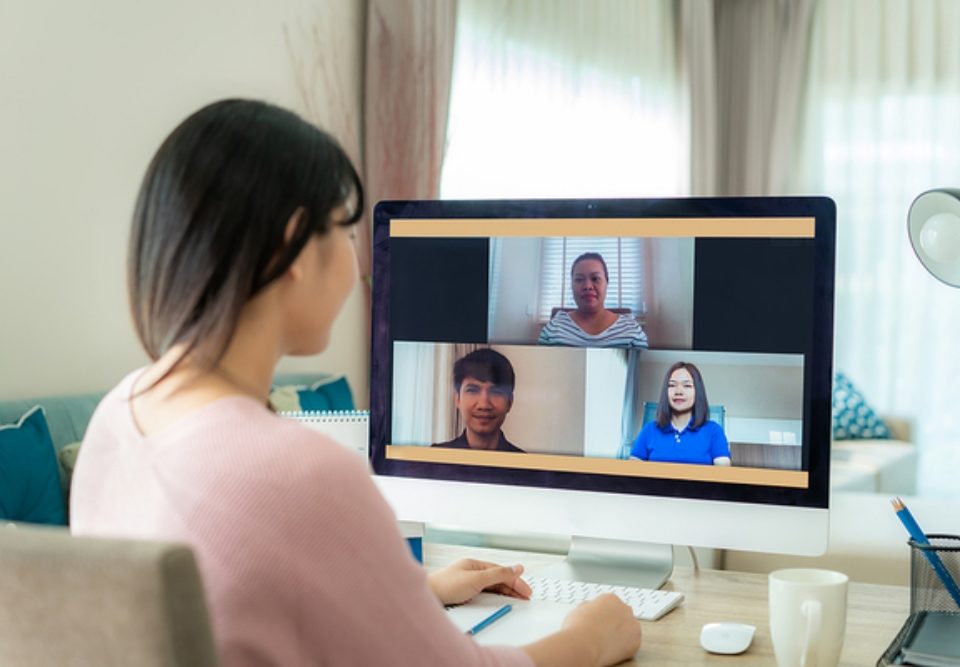3 Ways ‘Cyberloafing’ Kills Work Productivity and How to Address It
April 2, 2018Minimize Employee Time Theft While Maintaining a Motivated Workforce
April 16, 2018Why Employee Monitoring Software on Company Phones Makes Sense

Monitoring your employees computer and device usage has many benefits for your company. You can head off mistakes and lapses that could cost your company money, identify security risks and weaknesses, and eliminate cyberloafing and other types of time theft that happens when your employees are on the clock. But not all employees have the same function, and the same monitoring modalities won’t work the same way for all of your employees. Take a look at some of the reasons why it’s important to find a customizable monitoring solution for your workplace.
Employee Behavior is Supposed to Vary
Employee activity that’s normal and expected for one employee can be a source of concern for another.
You can’t expect all employees to behave the same way online – not just because they have different work methods, but because different positions require different behavior. You don’t want to get an alert every time your social media manager logs onto Facebook, for example, because that’s actually an important part of their job – they aren’t just wasting time online. On the other hand, you may want to know about it when a data entry employee logs on to Facebook, since that’s probably not part of their job.
IT is another area where different parameters might be needed. If an IT employee’s job involves testing your system for vulnerabilities, their activity may involve security breaches that would be alarming if they came from another user’s account, but that may be normal coming from theirs. It’s important to be able to customize your employee monitoring software in a way that accounts for these differences in employee behavior.
Monitoring Needs May Differ Between Remote and Onsite Employees
Technology makes it possible for more employees to work more flexible hours and from different locations. Not everyone needs to sit in an office all day, and some employees can be more effective and do different types of work from other locations.
However, this creates different needs when it comes to remote employee monitoring software. You probably don’t need GPS monitoring for someone who works exclusively from a desktop computer at your home office, but an employee who works on the road and uses a tablet, laptop, or cell phone provided by the company can benefit from features that allow you to locate their devices if they are lost or stolen, and these features help you keep your company information more secure.
Different Alerts Require Different Responses
You should not only be able to get the data you need, but you should also be able to get it when and how it works best for you.
Employee monitoring software can give you a lot of information, but what you do with that information can vary greatly depending on what it is. An employee who occasionally shops online during work hours should be addressed, but you may choose to bring that information up at their next performance review rather than dealing with it immediately. On the other hand, if you have an employee who is accessing data that they’re unauthorized to view or downloading insecure files, that activity needs to be addressed right away.
You need a monitoring system that allows you to set different levels of alerts for different types of activity. You may want some types of data to be collected into weekly or monthly reports, while other types of activities should trigger an immediate notification.
Monitoring reports and the data they reveal bring up a very important question: should employee monitoring be disclosed to employees? The short answer is: yes! Transparency is always the best option to ensure that employees understand corporate policies and are aware that their online activities are being tracked.
However, employee monitoring can be a hot topic in the workplace. While employers have legitimate concerns about protecting sensitive and proprietary data, not to mention preserving their own networks, software, and hardware, employees also have legitimate concerns about ensuring that their own privacy is protected. Too often, this can manifest itself as employer versus employees and can result in lowered morale and an unhappy work environment when employee monitoring software systems are implemented.
But it doesn’t have to be that way – employees and employers should be on the same side when it comes to protecting the company, and they can be if the employee monitoring software rollout is handled correctly.

Know Your Legal And Ethical Limitations
Educate yourself about your legal obligations and responsibilities when it comes to collecting data on your employees.
Perhaps the most important thing that employers can do to ensure that an employee monitoring software rollout goes smoothly is to make sure that they’re adhering to the legal and ethical limits of this type of monitoring. Though they vary by location, there are usually laws regarding your employees’ privacy that you’re supposed to follow – however, it’s not unheard of for employers to overstep these boundaries, and employees may not feel that they have much recourse in those cases. Making it a priority to respect your employees’ legal boundaries can help prevent and defuse tension.
Before you begin installing employee monitoring software, you have to ask an important question: is employee monitoring software legal? It’s a fair question. Data privacy is a thorny subject, and employees may be sensitive about being monitored because they are concerned about their private data. But the good news is that you’re on mostly solid ground when it comes to employee monitoring software. Take a look at what you need to know about the legality of employee monitoring.
The Laws at a Glance
In work spaces, employees have limited rights to privacy, especially when they’re using company-issued devices.
As a general rule, you are mostly within your rights to monitor your employees at work. There are no federal laws prohibiting the practice, as long as you restrict yourself to monitoring work-related tasks and areas and not private places.
State and local laws can vary, so it’s important to look into the laws where your company is located. However, for the most part, state laws are about consent to being monitored. This means that in some states or local areas, you may need to inform your employees that they’re going to be monitored before installing any monitoring devices or software. Even if your local area does not require this step, it’s often a good idea to disclose monitoring to employees anyway.
Exceptions
There are some exceptions to the rules. You’re allowed to monitor work-related tasks in work areas, so you can install software on employee devices or cameras in the office. However, in areas where work isn’t expected to take place, like an employee break room, you may not be allowed to record.
It should go without saying, but you also can’t monitor places where employees have a right to expect privacy, such as bathrooms or locker rooms, and you can face fines and other penalties for doing so. Monitoring phone calls can be tricky – you’re allowed to monitor business-related phone calls for quality assurance, but not personal calls. And when it comes to installing monitoring software on phones, computers, and other devices, while you’re perfectly within your rights to install them on company devices, installing this software on employee’s personal devices is more of a gray area. Your best bet is to issue your employees company devices to use for work purposes so that you don’t accidentally end up monitoring personal activities.
Talking to Your Employees
Giving your employees a heads-up on your monitoring plans is just good management.
While it’s fair for you to want to monitor your employees to check for quality and ensure that work is being done properly, employees don’t like to feel spied on or mistrusted. Your best bet is to address this head-on with your employees.
If you’re planning to implement employee monitoring, let your employees know up front. Make them aware that you’ve researched the laws and that your monitoring will be restricted to what’s legally allowed. Let them know that this isn’t a plan to catch them in the act – you’re just trying to make sure that work is being done and is up to the standards you expect. Being upfront and honest with your employees will prevent a lot of unnecessary upset.
The Ethics of Monitoring
Employers should also consider the ethical boundaries of employee monitoring in situations that aren’t explicitly covered by the law. You don’t necessarily need every bit of information that you could collect. For example, some information can be anonymized, giving you important information about patterns in the workplace without singling out individual employees. In many cases, you can get more useful information from observing anonymized patterns than you could from calling out individual employees, so why not preserve their anonymity when possible?
Transparency is Essential
It doesn’t matter how many good reasons there are to monitor your employees, if you allow your employees to find out after the fact that you’ve been monitoring them, rather than telling them up front, your employees are going to feel that they’ve been unfairly spied upon when they find out.
This is a natural reaction to discovering that one has been monitored without their knowledge, but it doesn’t have to happen. You can avoid this experience with your employees by being transparent and upfront with your monitoring plans. Let your employees know what you’re going to be monitoring and why. Inform them about what data will be collected, what you plan to do with that data, and how you’ll make sure that their data won’t end up being misused.
Allow your employees to express any concerns they have and make a good-faith effort to address those concerns honestly. This is a simple way to help ensure that morale stays high with the implementation of a new employee monitoring software system.
Incorporate Training Into Your Roll Out
Provide additional training to help bring your employees into the process of protecting the company’s data.
As an employer and leader, it’s your job to set your employees up for success, not to try to catch them doing something wrong. You can do that by incorporating computer security training into your employee monitoring system roll out.
After all, the most important thing that your employee monitoring software can do is help you prevent data breaches and other types of malicious infiltration. Your employees can also help prevent these problems if they’re properly trained in security protocols and suspicious contacts. By including security training for employees in your roll out, you’re emphasizing to your employees that your focus is on protecting the company’s data employee behavior and network, not singling out and punishing them. You’re including them in your efforts to make your company more secure.
Your employees will be happier if they see themselves as partners in protecting the company’s data, not targets of monitoring software. And your company’s data will be that much more secure.
You know your business best. The monitoring setup that works best for the business next door may not be right for your business, and vice versa. It’s important to choose monitoring software that gives you the tools you need and the ability to use them in the way that makes the most sense for you. For more information about how you can put monitoring software to use in your workplace, start your free 7-day trial.



